Due to the COVID-19 pandemic, I’ve been stuck at home for seven months. Just when the PSBB (large-scale social restrictions) was eased, dozens of countries banned Indonesian citizens from entering. You can only imagine how it felt for someone like me, who’s always on the go, to be confined for so long!
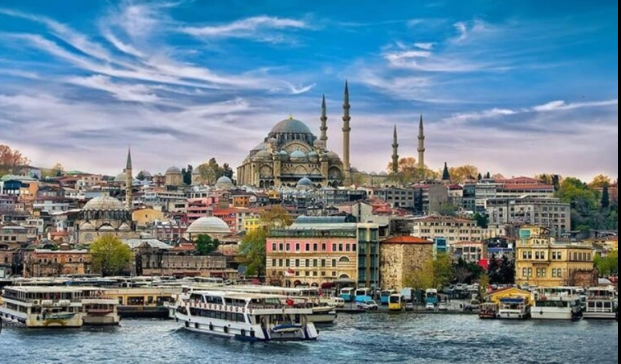
When Turkey reopened its borders to citizens of all countries in July 2020, I immediately got the itch to travel, but… I was still wary of COVID-19! So, I did some thorough research. The conclusion: COVID-19 cases in Turkey were already declining, while in Indonesia, they were still rising. The Turkish government had also implemented a Safe Tourism Certification Program to certify tourism facilities and ensure the health and safety of workers and visitors. Accredited agencies regularly inspect and assess these facilities according to international standards. Once certified, these facilities receive a logo, QR code, and public announcement, allowing everyone to access inspection data. So, it’s not just about checking temperatures and wearing masks.
To be even safer, I planned an itinerary with plenty of outdoor activities around the Mediterranean coast. I had to fly with Turkish Airlines because it’s the only airline offering direct flights from Jakarta to Istanbul. I also booked a private tour with a hotel, restaurants, and transportation certified under the Safe Tourism program, including insurance in case I contracted COVID-19. I even requested that the guide and driver take a rapid test beforehand. After ensuring everything was in place, my friend Sri and I departed on September 19, 2020.
What’s different about traveling in this new normal?
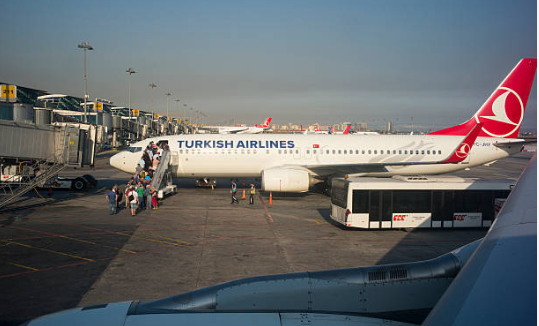
First, Turkish Airlines has a policy prohibiting cabin luggage. You’re only allowed a small bag weighing a maximum of 4 kg. The reason is that opening the cabin could cause passengers to crowd together, increasing the risk of virus spread. Once on board, instead of the usual pouch with an eye mask, earplugs, and toothbrush, you now get a hygiene kit with a mask, alcohol wipes, and hand sanitizer. The seats are spaced out. On my flight, both economy and business class had empty middle seats. The biggest difference is that there are no more hot meals or drinks; all food is packed in plastic boxes, and drinks are limited to sealed bottles. There’s no more food trolley service, and the flight attendants have minimal contact with passengers. If I got thirsty in the middle of the night, I had to walk to the galley to ask for a bottled water.
When we landed at Istanbul Airport, I was shocked—it was new and enormous! Apparently, the airport had been relocated to a new site a year ago, so no more cramped old airport. All passengers had their temperatures automatically scanned at the airport, and then we handed in our health forms at immigration. Done! My rapid test results from Indonesia weren’t even checked.
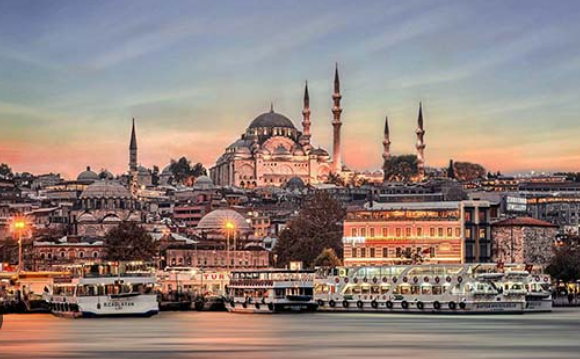
For the first two days, we explored Istanbul. The usual tourist spots like Hagia Sophia, Blue Mosque, Topkapi Palace, Basilica Cistern, Taksim Square, Grand Bazaar, plus Dolmabahçe Palace. Here’s a quick update on Hagia Sophia, which caused a stir back in Indonesia when it was converted from a museum into a mosque. The locals didn’t seem to mind, as there are already plenty of mosques around. The difference is that now the mosaics of the Virgin Mary and Christian symbols on the walls are covered, the second floor is closed off, and the entire ground floor is covered with green carpets.
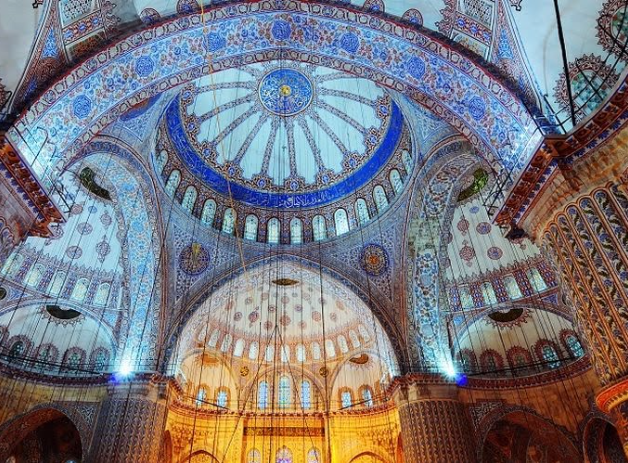
Meanwhile, the Blue Mosque (Sultan Ahmed Mosque) was undergoing major renovations, so most of it was closed. I didn’t stay long in either place because I was paranoid seeing so many tourists indoors! A cool protocol they have is that when foreign tourists need to cover up to enter the mosque, instead of lending scarves or robes, they now provide disposable cloths!
Next, I headed south to Turkey’s Mediterranean coast. From Istanbul, I flew to Dalaman (the city’s name makes you want to ask, “What color is your interior?” Hehe!) on Turkish Airlines, which also had empty middle seats. I flew back from Antalya.
The Mediterranean Sea, also known as the “Middle Sea,” stretches from northern Africa to southern Europe, with its coastline shared by 22 countries, including Spain, Italy, Croatia, Greece, Turkey, Lebanon, Israel, Egypt, and Morocco. The Mediterranean’s history played a crucial role in the beginnings and development of Western Civilization. And… the Mediterranean men are quite handsome!
Swimming, sunbathing, and lounging on the beach were my main goals in the Mediterranean region. The sea is incredibly blue! I couldn’t believe I was back here since my last visit in 2008 for the Blue Cruise (the story is in my book “The Naked Traveler 2”). But this time, the highlight was diving in Kas! I never imagined my first dive in 2020 would be in Turkey! The Mediterranean Sea has visibility up to 30 meters because it’s so clear. I dove to a depth of 35 meters to see a shipwreck, and I could still see the surface of the water. The underwater landscape features large rock formations like pillars with caves, but there aren’t many corals or fish. It’s very different from the tropical waters in our region.
Turkey (formerly known as Asia Minor or Anatolia) might have more Roman ruins than Italy itself. This was my third visit to Turkey, yet there’s still so much I haven’t seen. Since I was in Antalya Province, I visited Xanthos, Patara, Demre, Aspendos, and Perge—all built by the Romans in the 1st century BC, with some parts dating back to the Lycian period (5th century BC) and the Hellenistic period (3rd century BC). Ancient cities with marble pillars, shops along the main street with fountains, amphitheaters that could hold thousands of spectators for gladiator matches (both human and human vs. wild animals), monumental fountains with aqueducts, baths, basilicas, ancient tombs carved into mountain rocks, and more—all left me in awe! The civilization was so advanced thousands of years ago. Remarkably, the ruins are still well-preserved!
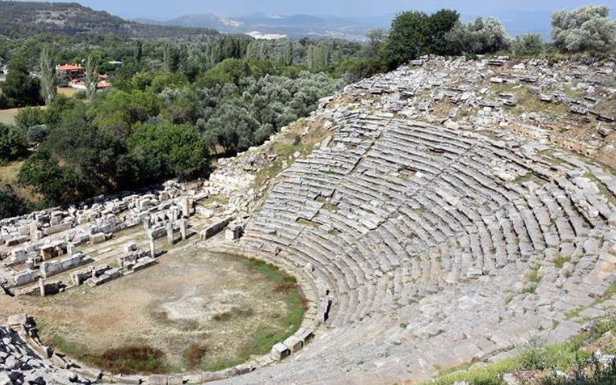
There’s an important story about the town of Demre (formerly Myra), where you’ll find the Church of Saint Nicholas. He was a Bishop in Myra known for secretly giving gifts to the poor at night. It’s from him that the figure of Sinterklaas became known in Europe, and later evolved into Santa Claus in America with cultural blending and commercial interests. So, Santa Claus actually originated from Turkey, folks!
When it came to meals, I was very strict about only eating at outdoor restaurants because I had to remove my mask while eating, so good ventilation was essential. In Istanbul, I ate meat dishes like kebabs, but in the Mediterranean, it was all about fish and seafood. Antalya Province is one of Turkey’s largest producers of vegetables and fruits, so I enjoyed a variety of salads and fresh pomegranates!
Is Turkey safe?
In Turkey, everyone is required to wear a mask as soon as they leave the house, or they’ll be fined. Every citizen must register their movements on a government app for contact tracing purposes whenever they go out. Information and warnings about COVID-19 protocols are everywhere, almost on every corner. Impressively, hand sanitizer is available everywhere, even in markets! I noticed that everyone was wearing masks, though sometimes they’d slip down. The ones not wearing masks were the foreign tourists! Sure, they were outdoors, but they were in busloads without masks. Whenever I saw tourists like that, I quickly distanced myself.
Hotels certified under the Safe Tourism program are even more meticulous in cleaning their facilities. For example, towels are plastic-wrapped, pillows are plastic-wrapped, utensils are placed in envelopes, condiments (salt, pepper, sauces) are not provided on tables, there’s no buffet, and menus are digital. Surgical masks and hand sanitizer are provided everywhere in hotels and restaurants, including before entering doors or elevators. Each table even has a bottle of hand sanitizer—I almost drank it once, thinking it was mineral water!
Traveling during the pandemic means I have to carry more stuff. Single-use clothing. My crossbody bag is filled with hand sanitizer, extra masks (I use surgical masks for better effectiveness), disinfectant, wet wipes, and dry tissues. At airports and on planes, I also wear a face shield over my mask. Before resting my arms on a table or going to the restroom, I disinfect everything. Whenever I return to the hotel, I immediately shower, change clothes, clean my watch and phone, and take my vitamins. Just imagine, I wear a mask for at least 15 hours a day! I’m afraid to take off my mask, let alone open Tinder! Eh! It’s better to be paranoid than careless, right?
The bottom line is that life in Turkey during the pandemic is pretty normal; everything is open, and activities continue as usual. The only difference is wearing masks! I even stopped collecting photos of handsome men because everyone’s faces are covered—luckily, my two guides were extremely good-looking, The positive side is that because there aren’t many tourists, I never had to queue to enter any attractions. The impact on me personally is that for the first time, all my travel photos feature me wearing a mask!

Your article helped me a lot, is there any more related content? Thanks! https://accounts.binance.com/sl/register-person?ref=OMM3XK51